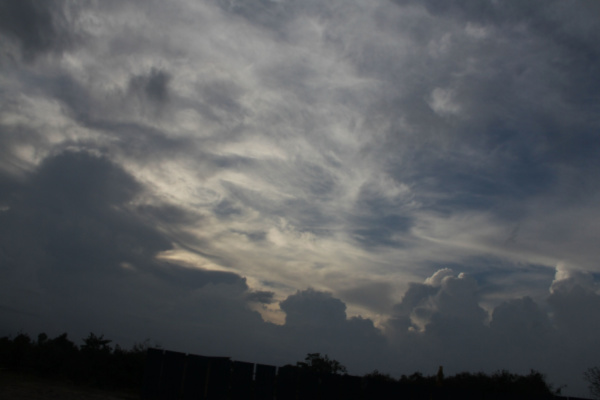Northeasterners finally breathed a little easier late Sunday night as the threat for tornadoes, the highest threat in six years, and severe thunderstorms dissipated.
As Fox Weather reports, people across the Northeast and New England kept an eye on the sky Sunday as a strong cold front sliced through the region and broke the recent brutal heat wave, but also triggered the strong to severe thunderstorms that produced large hail, damaging wind gusts and even potential tornadoes.
On Sunday afternoon, NOAA’s Storm Prediction Center (SPC) issued a Tornado Watch for more than 8 million people in parts of New York, Massachusetts, Vermont, New Hampshire and Maine. The Tornado Watch remained in effect until 8 p.m. ET. The NWS also issued a Severe Thunderstorm Watch for parts of Pennsylvania, New York, New Jersey, Ohio and Connecticut until 10 p.m.
The SPC placed nearly 61 million people in 14 states, from the Ohio Valley to the Northeast, in a Level 2 out of 5 risk on its 5-point severe thunderstorm risk scale on Sunday. Storms hammered Rockingham, New Hampshire with golf ball-sized hail. Winds up to 72 mph uprooted trees in Severance, New York. And residents in Poghkeepsie, New York sat in the dark for a while after a tree took down powerlines.
For the areas under a Level 3 risk of severe weather in central and northern New England, the tornado threat on Sunday was the highest it’s been in about six years, according to historical data from the SPC.
The FOX Forecast Center said the favorable environmental conditions, combined with the position of warm fronts and cold fronts, led to a setup for severe weather on Sunday that doesn’t often happen in the region. According to SPC data, Maine and Massachusetts typically only see about two tornadoes each year, while neighboring Vermont and New Hampshire only see about one per year.
Because tornadoes are infrequent in New England, many communities do not have outdoor warning sirens, which are typically found in tornado-prone areas of the central and southern U.S. Unlike some frontal boundaries that are merely a cold front by name, this one is expected to lower afternoon highs by about 10-20 degrees on Monday.
The relief from the heat will mean communities that recently experienced record highs will now have temperatures closer to average and, in some cases, below typical summer values. However, the relief is expected to be brief as temperatures will climb back to average or higher by midweek.
—
Photo Credit: Moawiz Ali / Shutterstock.com
